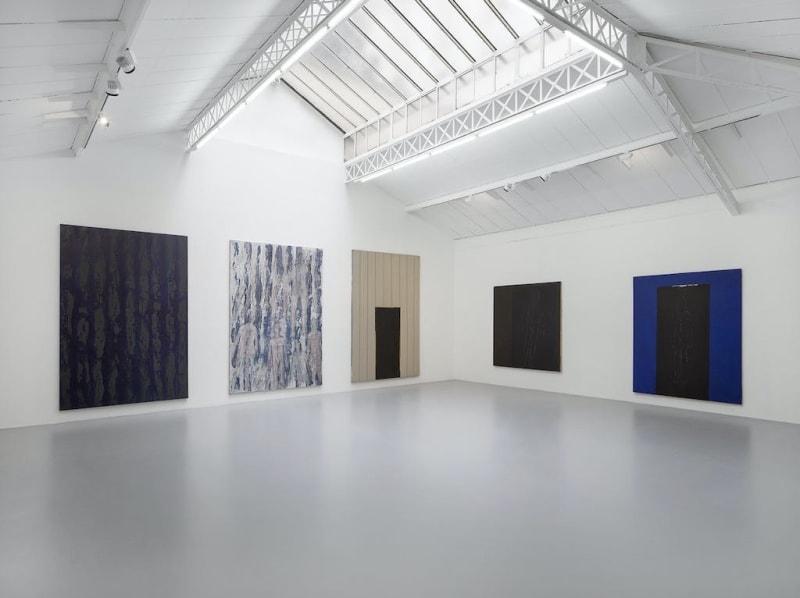To mark the centenary of the birth of Judit Reigl (1923–2020), Mennour gallery is presenting a series of works from the 1960s to the 1990s, a period notable for the appearance of anthropomorphic figures in a body of work hitherto uncompromisingly abstract.
It was when she was working on the series “Mass Writing”, Reigl relates, that she saw on the canvas, almost despite herself, a torso and then an entire body spilling over the edges of the picture. This shift from gestural painting to these levitating bodies is the marker of an inherent disregard on the artist’s part, a breaking down of the irreducible opposition between abstract and figurative painters. Although her work was part of the major currents of her time, Reigl was always a little outside the framework, refusing to accept any dogma. No sooner was she associated with a movement — Surrealism, gestural abstraction, lyricism, abstract expressionism — than she broke free of it; no matter how much one tries to classify her work, she traced her own singular, unclassifiable path. Reigl’s oeuvre is all the more scornful of categories in that it enjoys moving through successive stages, imposing “people” on hitherto abstract images, at the risk of baffling her public.
“There is no break”, she repeated, and it is by this natural succession between one series of works and the next that the exhibition attempts to make visible the extreme coherence of a body-to-body relationship between artist and canvas, whether Reigl is physically reflected in it or driving it with her vital energy. “The only constant in my work is the experience of being! If it has to be figurative, I accept it. If it becomes abstract, I accept that too.”
Between 1962 and 1972, Reigl did not exhibit in France. This decade of settling, which saw her most emblematic series — “Guano”, “Mass Writing”, “Weightlessness” — follow one another, ended with the “Men” and a return to the Parisian art scene at an exhibition at the Galerie Rencontres, run by her partner Betty Anderson.
That exhibition got a mixed reception from the critics, but also from her former supporters, who failed to grasp what seemed to them a figurative about-turn. The walls of her studio in the village of Marcoussis, southwest of Paris, were covered with postcards, press articles and documents, reflecting the world of references from which the work is constructed. From the inventor of Suprematism, Kazimir Malevich, Reigl admired The Running Man; from Cézanne The Bathers; and from prehistoric artists, dancing figures on cave walls. From the press she salvaged articles about swimmers, and in her archives, a long shot of migrants crossing a plain reminds us that she herself had broken through the Iron Curtain years before, fleeing Stalinist Hungary to find refuge in France.
When the abstract canvases of the “Unfolding” series are tilted vertically and, saturated with paint, become walls to be crossed; or when a door opens on the canvas of the “Entrance—Exit” series, the human figure reappears. These asexual, unclothed “people” reflect her vision of a humanity struggling to extricate itself from its earthly condition, just as her figures try to extricate themselves from the canvas, floating weightlessly, rising towards the “cosmic void”. Reigl puts herself on show, literally and figuratively, asserting herself as a painter, free, liberated, accepting only her own rule: “I am Reigl”.
— Christian Alandete, curator of the exhibition
